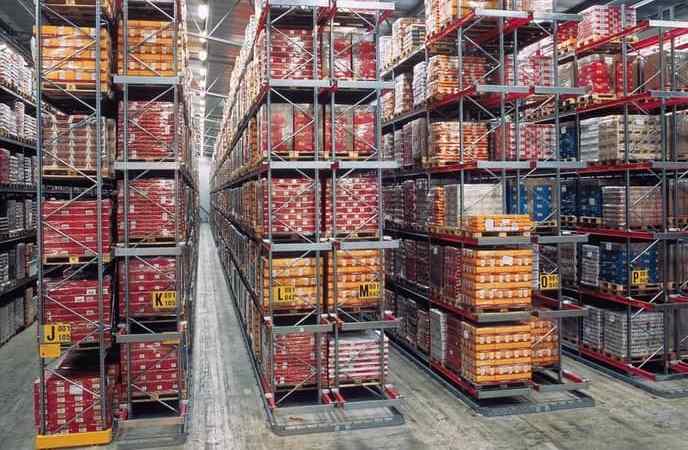
The What and Why of Warehousing
In business, it’s important to be able to optimize your operations in order to increase efficiency and reduce costs. This is especially true when it comes to customs clearance – if something is imported into a country, there may be certain regulations that need to be followed in order for the product to be allowed into the country.
-
-
- The What and Why of Warehousing
- Types of warehousing
- How to Choose the Right Warehouse for Your Needs
- Tips for Handling Customs Clearance
-
Types of warehousing
The three main types of warehousing are:
Containerized Warehousing:
This type of warehousing is most commonly used for products that require short lead times (within days or weeks) for delivery. It’s common for containerized warehouses to have high capacity and tight spacing between units, which enables quick movement of inventory between units and reduces congestion. Containerized warehouses are also typically more expensive than other warehouse types, but they offer significant benefits including rapid assembly line turnaround times and reduced transportation costs.
Cold Storage:
This type of warehouse is used to store perishable products such as food and flowers. Typically, these products must be stored at very cold temperatures in order to maintain their quality and flavor. Cold storage warehouses are typically located near major commercial centers so that they can quickly and easily access the products that they need.
Product Shipping:
Product shipping warehouses are used to store a wide variety of items, from new furniture to computer parts. These warehouses are situated close to major shipping ports so that the products can be shipped quickly across national boundaries. Product shipping warehouses tend to be larger than cold storage warehouses, because they need to accommodate a large volume of items.
Fletcher’s World:
This type of warehouse is named after Fletcher’s World, a company that was one of the first to use it commercially. Fletcher’s World is essentially a huge mall that contains various sections devoted to different types of merchandise, such as clothing, toys, and electronics. Customers visit Fletcher’s World and select what they want, then have it delivered directly to their home or office. Fletcher’s World warehouses are usually large enough to house both product shipping and cold storage facilities within them simultaneously
How to Choose the Right Warehouse for Your Needs
When it comes to logistics, the options are numerous and can vary depending on the product or service. In order to choose the right warehouse for your needs, you need to first understand what your specific needs are. There are three main types of warehouses: fixed, mobile, and e-commerce.
Fixed Warehouses: Fixed warehouses are typically used for products that do not require regular transport and storage. These warehouses generally have large capacity and can store a large amount of goods.
Mobile Warehouses: Mobile warehouses are good for products that will be transported frequently. These warehouses usually have smaller capacity but can move items quickly.
E-Commerce Warehouses: E-commerce warehouses are perfect for products that will be sold online. These warehouses have high capacity and can store a large amount of goods in less space than other warehouse types.
Tips for Handling Customs Clearance
Customs clearance is an important step in the international trade process, and can be a time-consuming and costly process. There are a number of tips that you can follow to streamline your customs clearance process.
1. Create a clear and concise international shipping plan. Keep all of your shipping information organized and easy to understand. This will help expedite customsclearance.
2. Consult with an experienced customs broker or agent. They can provide guidance on how to navigate the customs clearance process and can also help you identify potential shipping delays or issues that may arise.
3. Comply with all import requirements. Make sure that you have all of the required documentation ready before you start your customs clearance process. This includes copies of your order documents, packing lists, invoices, etc. Failure to comply with import requirements can lead to delays, penalties, or even rejection of your shipment altogether.
4. Arrange for pre-clearance services if possible. Some countries allow goods destined for certain countries to be cleared through their Customs department before they are shipped overseas, saving both time and money on formal customs procedures (this is usually only possible for large items).
5. Track your shipments throughout the entire process . keep track of the status of your shipment(s), from initial ordering through delivery into the country of destination; this will help ensure timely and accurate completion of your customs clearance process.
Conclusion
Shipping goods internationally can be a complex and time-consuming process. Thanks to modern warehousing options, however, customers now have the ability to optimize local customs clearance in order to minimize delays and maximize efficiency. By utilizing various shipping methods and stocking products in specific warehouses, customers can ensure that their products reach consumers as quickly and efficiently as possible. With the right warehousing strategy, international shipping can become a breeze!


![Pandora 4.0 Pro [Login Edition] No need box SPD Supported](https://riskchecking.com/wp-content/uploads/2022/12/Z3X-Pandora-Tool-Pandora-Box_romadd-300x258.png)